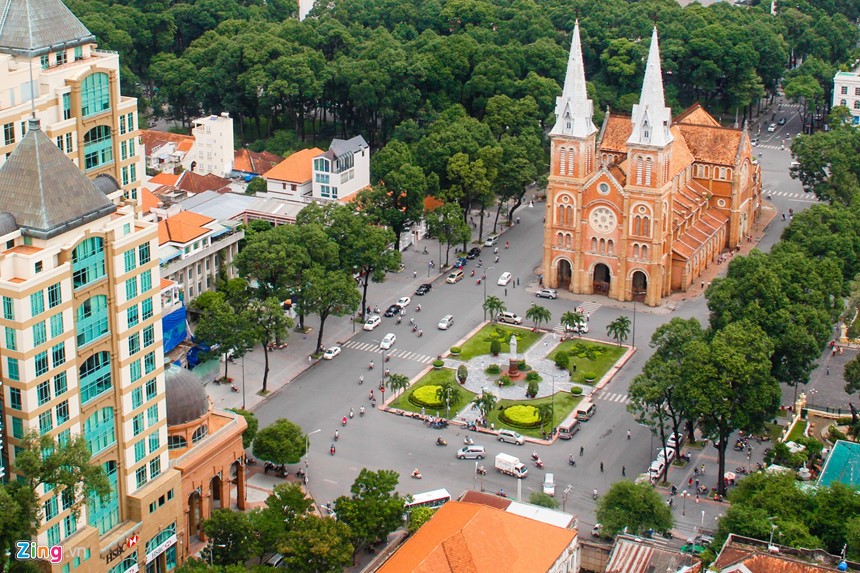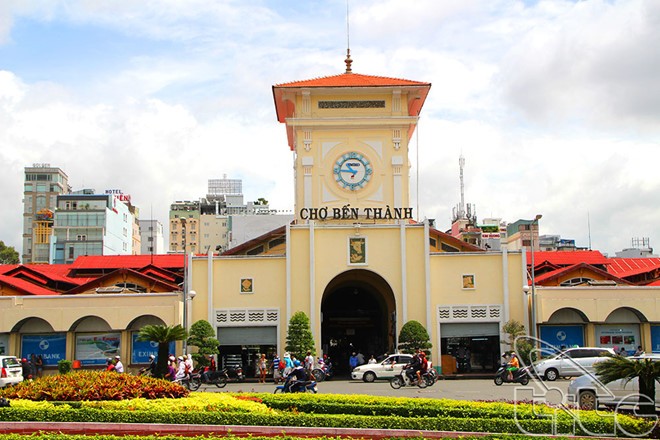Enjoy your daytime here with below landmarks around Ho Chi Minh City such as parks, pagodas, and temples. Here are a few places that you should check out first when you get here.
Notre Dame Cathedral
Ask any local people about the location of the city’s center or its symbol, the answer would definitely be Ben Thanh Market or Saigon Notre Dame Cathedral. This is an Old Church, but located in the Central of the City, surrounding with Restaurant, Coffee shop and main Post Office for the City.
Addr: 01 Công Xã Paris Street, District 1, right at the intersection of Pham Ngoc Thach St, Le Duan St and Cong xa Paris St.
Ho Chi Minh City Post Office
The Central Post Office in Ho Chi Minh is a beautifully preserved remnant of French colonial times and perhaps the grandest post office in all of Southeast Asia. Located next door to Notre Dame Cathedral, the two cultural sites can be visited together and offers visitors a chance to imagine life in Vietnam during the times of the Indochinese Empire.
Addr: 02 Công Xã Paris Street, District 1.
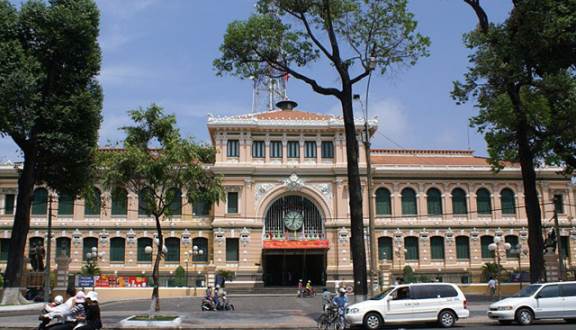
Ben Thanh Market
Bến Thành Market is a large marketplace in central Hồ Chí Minh City, Vietnam in District 1. The market is one of the earliest surviving structures in Saigon and an important symbol of Hồ Chí Minh City, popular with tourists seeking local handicrafts, textiles, áo dài and souvenirs, as well as local cuisine. Apart from being a major hub for the network of city buses, so you can easyly come here.
Address: Le Loi Street, Ben Thanh, District 1.
Independence Palace
It only take about 200 meter from Saigon Notre Dame Cathedral to Independence. also known as Reunification Palace (Vietnamese: Dinh Thống Nhất), built on the site of the former Norodom Palace, is a landmark in Ho Chi Minh City, Vietnam. It was designed by architect Ngô Viết Thụ and was the home and workplace of the President of South Vietnam during the Vietnam War. It was the site of the end of the Vietnam War during the Fall of Saigon on April 30, 1975, when a North Vietnamese Army tank crashed through its gates.
Address: 135 Nam Ky Khoi Nghia Street, District 1, Ho Chi Minh City, Vietnam
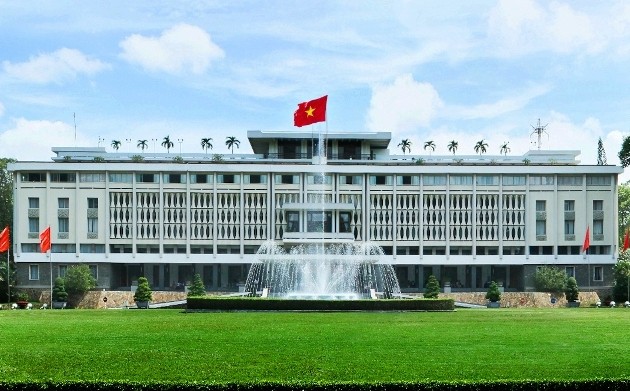
Saigon Opera House
The Municipal Theatre of Ho Chi Minh City, also known as Saigon Opera House(Vietnamese: Nhà hát lớn Thành phố Hồ Chí Minh; French: Opėra de Saigon), is an opera house in Ho Chi Minh City, Vietnam. It is an example of French Colonial architecture in Vietnam.
Built in 1897 by French architect Eugène Ferret as the Opėra de Saigon, the 800 seat building was used as the home of the Lower House assembly of South Vietnam after 1956. It was not until 1975 that it was again used as a theatre, and restored in 1995.
Address: Dong Khoi Street, Ben Nghe, District 1
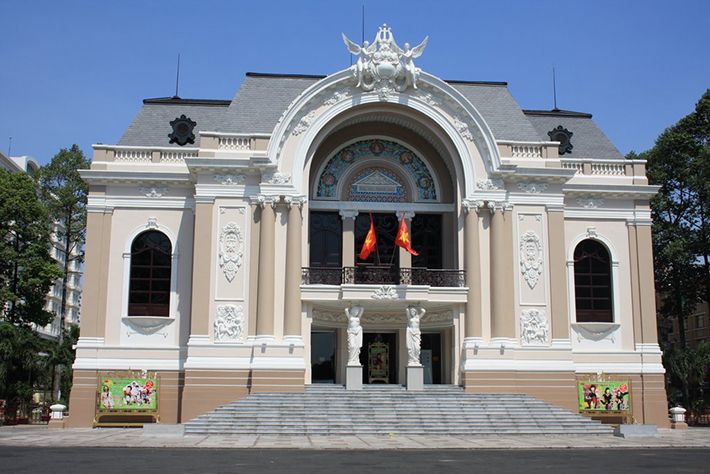
Cu Chi tunnels
Cu Chi tunnels are an immense network of connecting underground tunnels located in the Củ Chi District of Ho Chi Minh City (Saigon), Vietnam, and are part of a much larger network of tunnels that underlie much of the country. The Củ Chi tunnels were the location of several military campaigns during the Vietnam War, and were the Viet Cong’s base of operations for the Tết Offensive in 1968.
The tunnels were used by Viet Cong soldiers as hiding spots during combat, as well as serving as communication and supply routes, hospitals, food and weapon caches and living quarters for numerous North Vietnamese fighters. The tunnel systems were of great importance to the Viet Cong in their resistance to American forces, and helped to counter the growing American military effort.
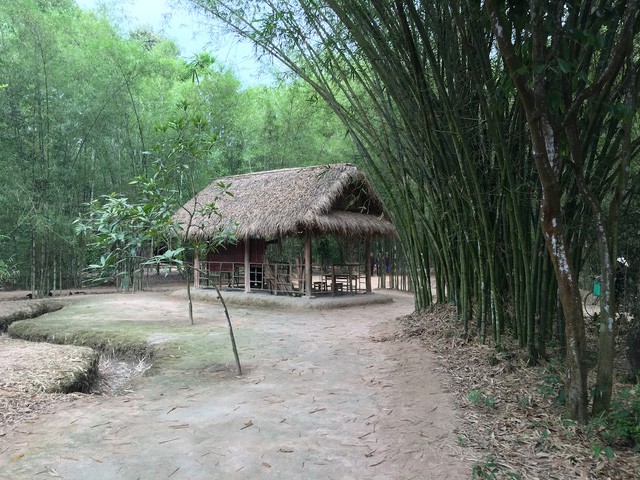 ( wikipedia.org )
( wikipedia.org )


